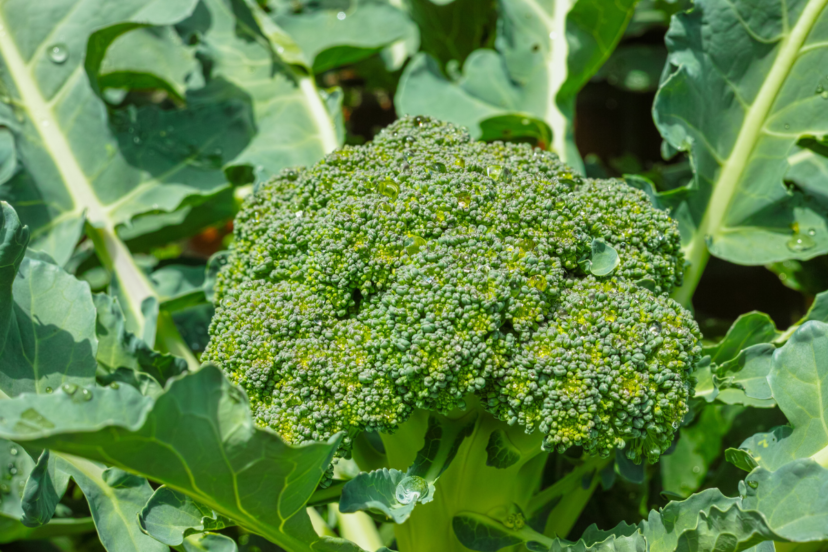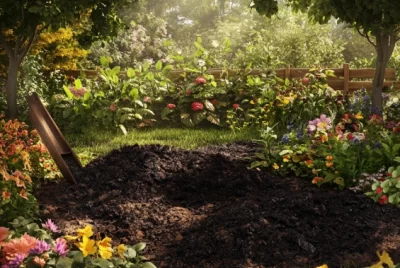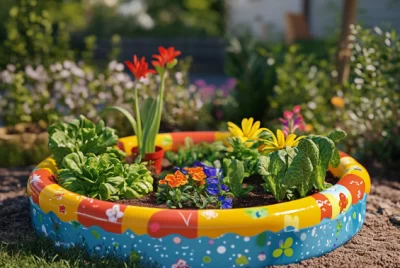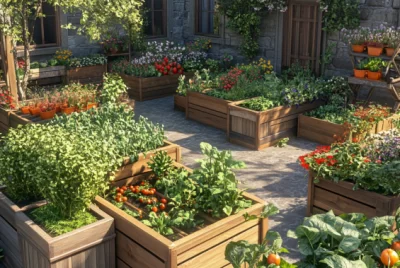Broccoli Gardening: From Seed to Harvest
Broccoli gardening is a fantastic journey that lets you grow your own crunchy, green veggies right in your backyard or even in small containers on your balcony. Imagine being able to pick fresh broccoli for your meals, knowing exactly where it comes from and that it’s packed with goodness. Growing broccoli isn’t without its challenges, like figuring out the best time to plant or how to keep those pesky pests away, but the rewards are definitely worth it. Not only do you get to enjoy delicious, healthy food, but gardening itself is a fun activity that can make you feel proud of what you’ve accomplished.
Introduction
Have you ever thought about growing your own broccoli? Broccoli gardening is not only rewarding because you get to eat what you grow, but it’s also a great way to spend time outside, get a bit of exercise, and even involve the whole family in a fun project. Plus, broccoli is super healthy, loaded with vitamins C and K, fiber, and other nutrients that are great for your body. In this guide, we’re going to take you through everything you need to know about growing your own broccoli, from choosing the right variety to keeping your plants happy and healthy until it’s time to enjoy the fruits of your labor.
The Benefits of Broccoli Gardening
Broccoli is a powerhouse when it comes to nutritional value, and growing it yourself has a bunch of perks. First off, homegrown broccoli just tastes better. It’s fresher than anything you’ll find in the store, and you can pick it right when it’s perfect for eating. Plus, gardening is a great way to get outside, soak up some vitamin D, and enjoy a bit of physical activity. It’s also a fantastic learning opportunity for kids, teaching them where their food comes from and instilling a sense of responsibility and accomplishment.
Understanding Broccoli’s Nutritional Value
Did you know that broccoli is one of the healthiest veggies you can put on your plate? It’s true! Broccoli is loaded with vitamins C and K, which are essential for keeping your bones and skin healthy. It’s also a great source of fiber, which helps keep your digestive system running smoothly. And let’s not forget about the antioxidants that help your body fight off diseases. All these benefits make broccoli a must-have in your garden and on your table.
Getting Started
Before you dive into broccoli gardening, there are a few things you need to know to set yourself up for success. Let’s take a look at how to get started.
Choosing the Right Broccoli Variety
Not all broccoli is the same! There are lots of different varieties to choose from, and the right one for you depends on your climate and how you plan to eat it. Some types are perfect for those cold, shorter days, while others thrive in milder weather. There are even varieties that are specially designed to do well in pots if you’re short on space.
Open-Pollinated versus Hybrid Varieties
When picking out seeds, you’ll come across two main types: open-pollinated and hybrid. Open-pollinated varieties are great if you want to try saving your own seeds since their offspring will be pretty similar to the parent plants. Hybrid varieties, on the other hand, are created by crossing two different types of broccoli to bring out the best traits of both, like disease resistance or uniform size. However, seeds from hybrid plants might not produce the same characteristics in the next generation.
Popular Broccoli Varieties for Home Gardens
Some favorite broccoli varieties for home gardens include ‘Calabrese,’ often found in grocery stores, and ‘Waltham 29,’ known for its cold resistance. There’s also ‘Green Magic,’ a hybrid variety that does well in a variety of climates. When choosing seeds, think about your local weather conditions and how you like your broccoli to taste and look.
Understanding Your Climate and Soil
The key to happy broccoli plants is making sure they have the right environment to grow in. Broccoli likes it cool, but not too cold, and it needs rich, well-draining soil to thrive.
Soil Preparation for Broccoli
Broccoli plants are pretty hungry and need rich soil filled with lots of organic matter to grow big and strong. Before you plant your seeds or seedlings, mix in some compost or aged manure to give them a good start. You’ll also want to make sure your soil has a pH between 6.0 and 7.0, which is just right for broccoli.
Ideal Climate Conditions for Growing Broccoli
Broccoli grows best when the days are a bit cool, usually in spring or fall. If it gets too hot, your broccoli might bolt—that means it goes to flower instead of forming those tasty heads. To avoid this, try to plant your broccoli at a time when it can mature during cooler weather.
With these basics in mind, you’re well on your way to becoming a broccoli gardening pro. Remember, every plant has its own personality, so don’t be discouraged if things aren’t perfect right away
Planting Broccoli
Getting your broccoli into the ground at the right time and in the right way is crucial for a bountiful harvest. Here’s how to ensure your broccoli gets the best start possible.
When to Plant Broccoli
Broccoli is a cool-season crop, thriving in temperatures between 60°F and 70°F. Timing is key to avoid the summer heat or winter freezes.
Spring Planting Guide
For a spring harvest, start your broccoli seeds indoors about 6 weeks before the last expected frost. Then, move them outdoors 2 to 3 weeks before that frost date. This gives your plants a head start and protects them from the harshest winter weather.
Fall Planting Guide
For fall harvesting, which can lead to even sweeter broccoli due to mild frosts, plant seeds directly outdoors in mid to late summer, about 85 to 100 days before the first expected fall frost. This timing allows your broccoli to mature in cooler weather.
Sowing Techniques and Seedling Care
Proper sowing and care for your seedlings are crucial for strong, productive plants.
Direct Sowing vs. Starting Indoors
While starting seeds indoors is recommended for spring planting, direct sowing can work well for fall crops. If direct sowing, plant seeds ½ inch deep and space them about 3 inches apart. Thin the seedlings to 18-24 inches apart once they have a couple of true leaves.
Caring for Broccoli Seedlings
Whether you start indoors or outdoors, make sure your seedlings have plenty of light and water. Indoor seedlings benefit from a grow light to prevent them from becoming leggy. Harden off indoor seedlings by gradually introducing them to outdoor conditions over a week before planting them in their final spots.
Maintenance and Care
Once your broccoli is in the ground, it needs regular care and attention to flourish.
Watering and Mulching
Consistent moisture is essential for broccoli, especially once heads begin to form.
Proper Watering Techniques
Water your broccoli plants deeply once a week, providing 1 to 1.5 inches of water. Avoid overhead watering to minimize the risk of leaf diseases.
Benefits of Mulching
Mulch around your broccoli plants to retain moisture, regulate soil temperature, and reduce weed competition. Organic mulches like straw or wood chips are great options.
Fertilization and Soil Health
Broccoli needs nutrient-rich soil to grow big and tasty heads.
Organic versus Synthetic Fertilizers
Feed your broccoli plants with a balanced organic fertilizer when you transplant them and again when they start to form heads. Organic options release nutrients slowly, improving soil health over time.
Maintaining Soil Health Throughout the Season
In addition to fertilizing, keep an eye on your soil’s condition. Incorporating compost or other organic matter throughout the growing season can boost your soil’s fertility and structure, supporting your broccoli plants.
Pest and Disease Management
Keeping pests and diseases at bay is vital for a successful harvest.
Common Pests and How to Combat Them
Watch out for cabbage loopers and aphids, which love broccoli. Physical barriers like row covers can protect your plants. Encouraging beneficial insects by planting flowers nearby can also help control pests.
Disease Prevention Strategies
Practice crop rotation and good sanitation in your garden to prevent disease. If you notice any sick plants, remove them promptly to avoid spreading the issue.
Harvesting and Storage
After all your hard work, it’s time to enjoy your broccoli!
Knowing When to Harvest Broccoli
Harvest your broccoli when the heads are firm and tight, before the flowers start to open. Cut the central head with a sharp knife, leaving a few inches of stem.
Signs of Maturity
Look for heads that are 4-7 inches in diameter as a sign your broccoli is ready to harvest. Smaller side shoots will continue to produce after the main head is harvested.
Harvesting Techniques
Cut the broccoli stem at a slant to encourage water to run off, preventing rot. Leave the plant in the ground to encourage those side shoots to develop for a continued harvest.
Storing Broccoli for Longevity
Proper storage can extend the life of your broccoli, letting you enjoy it longer.
Immediate Use vs. Long-Term Storage
For short-term storage, keep broccoli in the refrigerator where it can last up to a week. For longer storage, blanch and freeze your broccoli.
Tips for Freezing Broccoli
Blanching — briefly boiling and then plunging into ice water — stops enzyme actions which can spoil the vegetable. Freeze in a single layer on a baking sheet before transferring to freezer bags to prevent clumps.
Following these steps will help ensure your broccoli gardening adventure is successful and rewarding. Happy gardening!
Troubleshooting Common Issues
Even with the best planning and care, you might encounter some bumps along the way. Here’s a quick guide to troubleshooting common broccoli gardening issues:
Addressing Poor Growth
If your broccoli isn’t growing as expected, check for a few common issues: inadequate sunlight, insufficient water, or poor soil nutrients. Adjusting these elements can often kickstart your plants’ growth.
Managing Pests and Diseases
Stay vigilant and proactive in managing pests and diseases. Keep your garden clean, use natural predators to your advantage, and don’t hesitate to remove affected plants to protect the rest of your crop.
Broccoli Gardening Conclusion
Broccoli gardening is a rewarding endeavor that yields nutritious and delicious results. By choosing the right variety for your climate, preparing your soil properly, planting at the right time, and providing your plants with the care they need, you’ll set yourself up for success. Remember, consistent watering, vigilant pest management, and timely harvesting are key to growing healthy, productive broccoli plants.
Whether you’re a seasoned gardener or a green-thumbed newbie, growing your own broccoli can be a fun and fulfilling experience. It’s a chance to connect with nature, enjoy some outdoor activity, and eventually savor the taste of your home-grown veggies. Plus, involving family and friends in the gardening process can make it an even more enjoyable and educational activity for everyone.
We hope this guide has inspired you to start your own broccoli garden and equipped you with the knowledge you need to thrive. Happy gardening, and enjoy the delicious rewards of your labor!
FAQ: Broccoli Gardening
1. What is the best time of year to plant broccoli?
Answer: The best time to plant broccoli depends on your climate. For a spring harvest, start seeds indoors 6 weeks before the last expected frost and transplant them outdoors 2 to 3 weeks before the last frost date. For a fall harvest, sow seeds directly outdoors in mid to late summer, about 85 to 100 days before the first expected fall frost.
2. How much sun does broccoli need to grow properly?
Answer: Broccoli plants thrive in full sun, requiring at least 6 to 8 hours of direct sunlight each day. Adequate sunlight is essential for strong growth and optimal yields.
3. How do I protect my broccoli plants from pests?
Answer: Protect your broccoli plants from pests by using physical barriers like row covers to keep bugs away. Encouraging beneficial insects and practicing crop rotation can also help manage pest populations. Stay vigilant and remove any pests by hand if necessary.
4. When is the right time to harvest broccoli?
Answer: Harvest broccoli when the heads are firm, tight, and about 4-7 inches in diameter, but before the flowers start to bloom. Cut the central head off with a sharp knife, leaving a few inches of stem to encourage the growth of side shoots.
5. How should I store harvested broccoli to keep it fresh?
Answer: For short-term storage, place broccoli in a plastic bag in the refrigerator, where it can last up to a week. For longer storage, blanch the broccoli florets for a few minutes, then plunge them into ice water to stop the cooking process. Dry the florets and freeze them on a baking sheet before transferring to freezer bags. This method can keep your broccoli fresh for several months.




